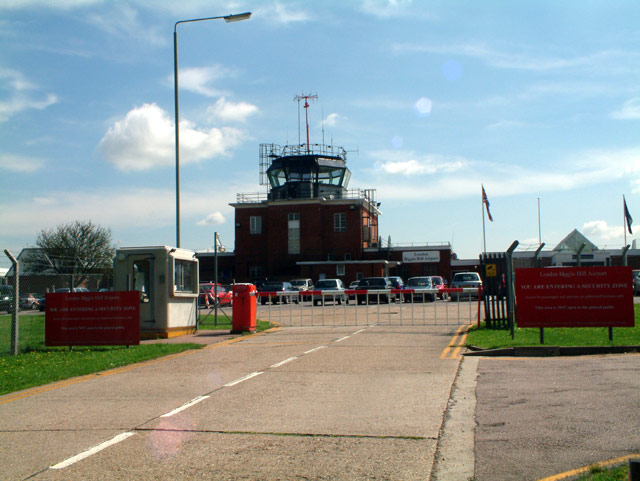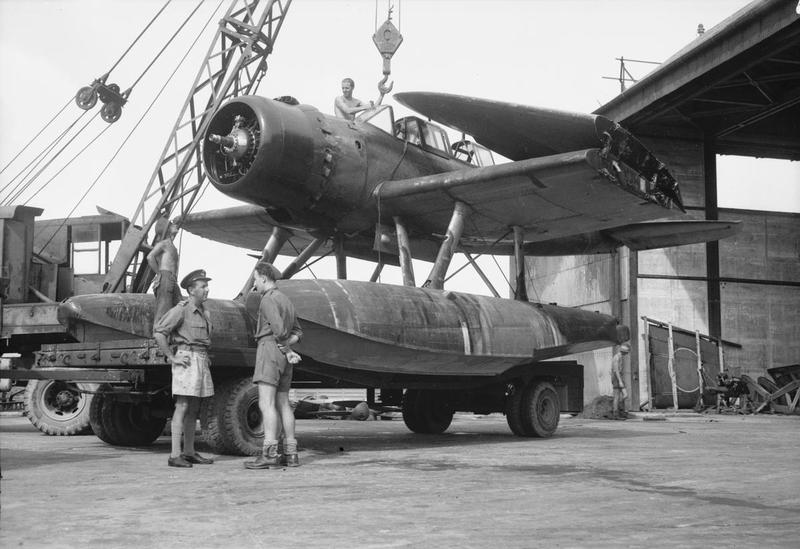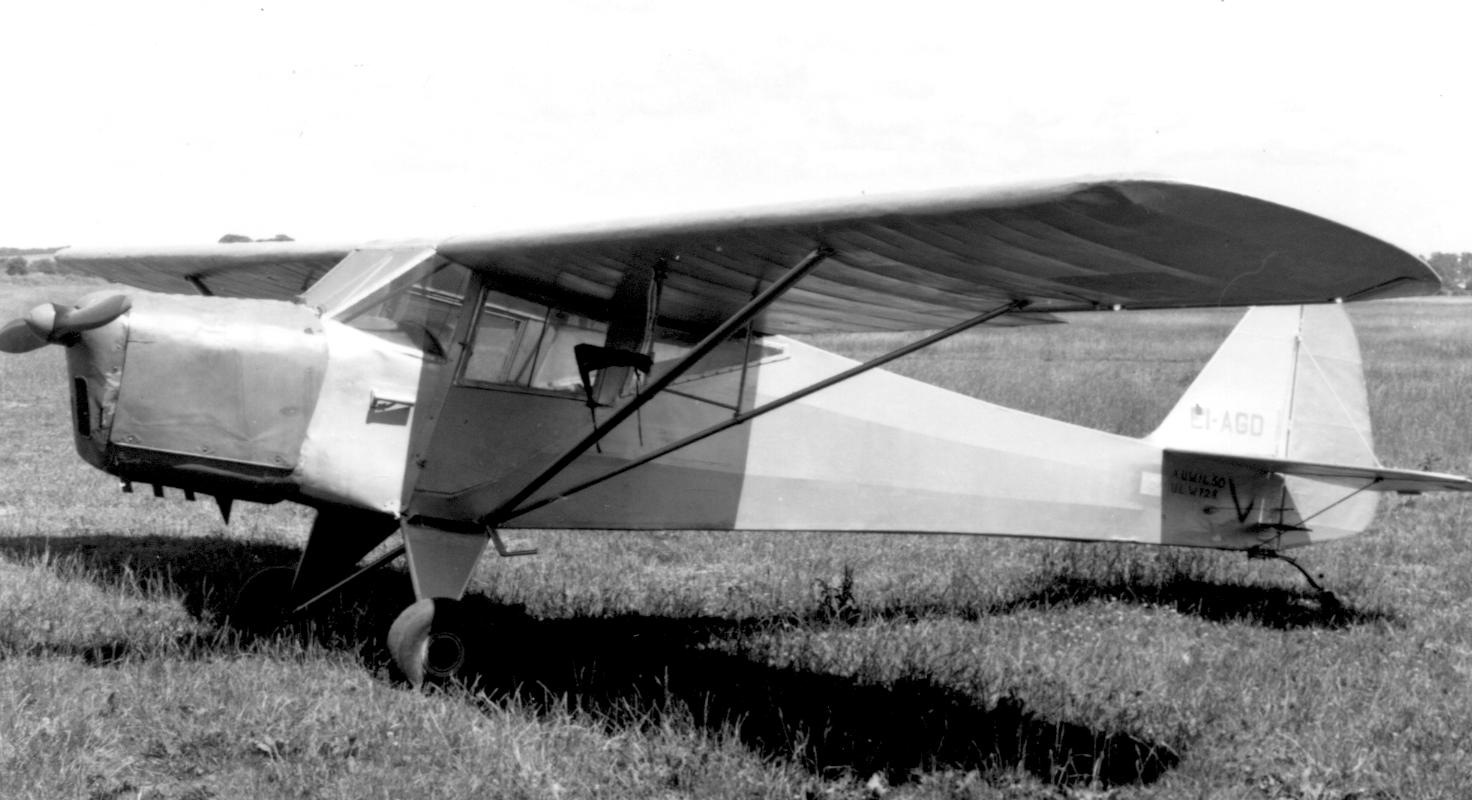|
RAF Clifton
Royal Air Force Clifton or RAF Clifton is a former Royal Air Force station located north west of York city centre and south west of Haxby, North Yorkshire, England. The airfield was opened in 1936 as a civilian airport but by 1939 the station was taken by the Royal Air Force (RAF) for use in the Second World War and was returned in 1946 when the airport reopened. However, in 1955 the airfield was closed for good. The airfield during wartime was also known as RAF York and RAF Rawcliffe. Station history The airfield was originally York Municipal Aerodrome which opened in 1936 after an air circus had used the site previously but on 1 September 1939 the site was requisitioned by the RAF for Bomber Command. The first squadron to use the airfield was No. 613 Squadron RAF between 7 September 1940 and 8 July 1941 as a detachment while the main squadron were at RAF Firbeck. The airfield was empty until No. 4 Squadron RAF arrived on 27 August 1940 originally with the Westland Lysande ... [...More Info...] [...Related Items...] OR: [Wikipedia] [Google] [Baidu] |
Ensign Of The Royal Air Force
An ensign is the national flag flown on a vessel to indicate nationality. The ensign is the largest flag, generally flown at the stern (rear) of the ship while in port. The naval ensign (also known as war ensign), used on warships, may be different from the civil ensign (merchant ships) or the yacht ensign (recreational boats). Large versions of naval ensigns called battle ensigns are used when a warship goes into battle. The ensign differs from the jack (flag), jack, which is flown from a jackstaff at the bow of a vessel. In its widest sense, an ensign is just a flag or other standard. The European military rank of Ensign (rank), ensign, once responsible for bearing a unit's standard (whether national or regimental), derives from it (in the cavalry, the equivalent rank was Cornet (rank), cornet, named after a type of flag). Ensigns, such as the ancient Roman ensigns in the Arch of Constantine, are not always flags. National ensigns In nautical use, the ensign is flown on a shi ... [...More Info...] [...Related Items...] OR: [Wikipedia] [Google] [Baidu] |
RAF Doncaster
Royal Air Force Doncaster or more simply RAF Doncaster, also referred to as Doncaster Aerodrome, is a former Royal Air Force station near Doncaster, South Yorkshire, England. The first Aviation meeting in England In 1909, Doncaster and specifically Doncaster Racecourse was chosen as the venue for an airshow, after the world's first international air display in Rheims in 1908. Around a dozen aviators were present, the most famous being Léon Delagrange, and Roger Sommer. Samuel Cody in an attempt to win a prize offered by ''The Daily Mail'' for the first British pilot in a British aeroplane to fly a circular mile signed British naturalisation papers in front of the crowd with the band playing both the Star Spangled Banner and the National Anthem. Unfortunately, he crashed his airplane on the first day of the meeting and made no significant flights. Artist Dudley Hardy drew caricatures of participating flyers, Captain Sir Walter Windham, Léon Delagrange, Hubert Le Blon, Louis ... [...More Info...] [...Related Items...] OR: [Wikipedia] [Google] [Baidu] |
List Of Former Royal Air Force Stations
This list of former RAF stations includes most of the stations, airfields and administrative headquarters previously used by the Royal Air Force. The stations are listed under any former county or country name which was appropriate for the duration of operation. It has been stated that RAF stations took their name from the civil parish in which the station headquarters was located, rather than the nearest railway station (e.g., Binbrook has never had a railway station), but there are many exceptions. __TOC__ British Isles Chain Home, Chain Home Low, Chain Home Extra Low, ROTOR and tropo-scatter stations Notes: Some of the Chain Home Low sites were co-located with the larger Chain Home radars. Chain Home Extra Low equipment was co-located with "Chain Home" and "Chain Home Low" as well as at separate sites, but were of a less permanent nature, usually with mobile equipment. ROTOR was the post war Radar interception system created from existing radar installations. NARS ... [...More Info...] [...Related Items...] OR: [Wikipedia] [Google] [Baidu] |
York Aerodrome Plaque With Daffodils - Geograph
York is a cathedral city with Roman origins, sited at the confluence of the rivers Ouse and Foss in North Yorkshire, England. It is the historic county town of Yorkshire. The city has many historic buildings and other structures, such as a minster, castle, and city walls. It is the largest settlement and the administrative centre of the wider City of York district. The city was founded under the name of Eboracum in 71 AD. It then became the capital of the Roman province of Britannia Inferior, and later of the kingdoms of Deira, Northumbria, and Scandinavian York. In the Middle Ages, it became the northern England ecclesiastical province's centre, and grew as a wool-trading centre. In the 19th century, it became a major railway network hub and confectionery manufacturing centre. During the Second World War, part of the Baedeker Blitz bombed the city; it was less affected by the war than other northern cities, with several historic buildings being gutted and resto ... [...More Info...] [...Related Items...] OR: [Wikipedia] [Google] [Baidu] |
RAF Maintenance Command
RAF Maintenance Command was the Royal Air Force command which was responsible for controlling maintenance for all the United Kingdom-based units from formation on 1 April 1938 until being renamed RAF Support Command on 31 August 1973. History Maintenance Command was formed in 1938. No. 40 Group RAF was formed within the command on 3 January 1939, and responsible for all equipment except bombs and explosives.Air of Authority No. 42 Group RAF was made responsible for fuel and ammunition storage. In 1940, technical control (but not administrative control) of No. 41 Group and No. 43 Group of Maintenance Command passed to the Ministry of Aircraft Production. One important change made within days of the Ministry's creation was it taking over the RAF aircraft storage Maintenance Units which were found to have accepted 1,000 aircraft from industry, but issued only 650 to squadrons. These management and organisational changes bore results almost immediately: in the first four mont ... [...More Info...] [...Related Items...] OR: [Wikipedia] [Google] [Baidu] |
RAF Fighter Command
RAF Fighter Command was one of the commands of the Royal Air Force. It was formed in 1936 to allow more specialised control of fighter aircraft. It served throughout the Second World War. It earned near-immortal fame during the Battle of Britain in 1940, when the Few held off the Luftwaffe attack on Britain. The Command continued until 17 November 1943, when it was disbanded and the RAF fighter force was split into two categories; defence and attack. The defensive force became Air Defence of Great Britain (ADGB) and the offensive force became the RAF Second Tactical Air Force. Air Defence of Great Britain was renamed back to Fighter Command in October 1944 and continued to provide defensive patrols around Great Britain. It was disbanded for the second time in 1968, when it was subsumed into the new Strike Command. Origins On 20 May 1926, the forerunner of Fighter Command was established as a group within Inland Area. On 1 June 1926, Fighting Area was transferred to the Air D ... [...More Info...] [...Related Items...] OR: [Wikipedia] [Google] [Baidu] |
Fleet Air Arm
The Fleet Air Arm (FAA) is one of the five fighting arms of the Royal Navy and is responsible for the delivery of naval air power both from land and at sea. The Fleet Air Arm operates the F-35 Lightning II for maritime strike, the AW159 Wildcat and AW101 Merlin for commando and anti-submarine warfare and the BAE Hawk as an aggressor. The Fleet Air Arm today is a predominantly rotary force, with helicopters undertaking roles once performed by biplanes such as the Fairey Swordfish. The Fleet Air Arm was formed in 1924 as an organisational unit of the Royal Air Force, which was then operating the aircraft embarked on RN ships—the Royal Naval Air Service having been merged with the Army's Royal Flying Corps in 1918 to form the Royal Air Force—and did not come under the direct control of the Admiralty until mid-1939. During the Second World War, the Fleet Air Arm operated aircraft on ships as well as land-based aircraft that defended the Royal Navy's shore establishments a ... [...More Info...] [...Related Items...] OR: [Wikipedia] [Google] [Baidu] |
RAF Army Cooperation Command
The RAF Army Co-operation Command was a short-lived command of the Royal Air Force during the Second World War, comprising the army cooperation units of the RAF. The command was formed on 1 December 1940 when No. 22 (Army Co-Operation) Group, previously a part of Fighter Command, was raised to command status. Initially it controlled two groups: No. 70 Group RAF for training and No. 71 Group RAF for operations. In August 1941, 71 Group re-organized its squadrons into a Wing basis. Each wing was directly attached to a UK based Army regional Command. Its function was to act as the focus for activities connected with the interaction of the British Army and the RAF, such as close air support, tactical reconnaissance, artillery spotting and training of anti-aircraft defences. It was also responsible for developing tactics for the invasion of Europe, where direct air support proved to be decisive.Delve 1994, p. 100. Army Co-Operation Command proved to be controversial, with the ... [...More Info...] [...Related Items...] OR: [Wikipedia] [Google] [Baidu] |
List Of Royal Air Force Maintenance Units
The following is a list of Royal Air Force Maintenance Units (MU). The majority of MUs were previously Equipment Depots (ED), Storage Depots (SD) and Aircraft Storage Units (ASU)s. No. 1 MU – No. 100 MU No. 101 MU – No. 200 MU No. 201 MU – No. 300 MU No. 301 MU – No. 400 MU No. 401 MU – No. 500 MU No. 1 (India) MU – No. 10 (India) MU See also *List of Royal Air Force aircraft squadrons *List of RAF Regiment units *List of Fleet Air Arm aircraft squadrons * List of Army Air Corps aircraft units *List of Air Training Corps squadrons *List of Battle of Britain squadrons *University Air Squadron *Air Experience Flight *Volunteer Gliding Squadron *List of Royal Air Force units & establishments *List of Royal Air Force schools *List of Royal Air Force aircraft independent flights * List of RAF squadron codes *List of conversion units of the Royal Air Force *United Kingdom military aircraft serial numbers *United Kingdom aircraft test serials *Br ... [...More Info...] [...Related Items...] OR: [Wikipedia] [Google] [Baidu] |
Taylorcraft Auster
The Taylorcraft Auster was a British military liaison and observation aircraft produced by the Taylorcraft Aeroplanes (England) Limited company during the Second World War. Design and development The Auster was a twice-removed development of an American Taylorcraft design of civilian aircraft, the Model A. The Model A had to be redesigned in Britain to meet more stringent Civil Aviation standards and was named the Taylorcraft Plus C.Mondey 1994, p. 71.March 2000, p. 225. After the start of the Second World War, the company developed the model further as an Air Observation Post (AOP)—flown by officers of the Royal Artillery and used for directing artillery fire of British Army Royal Artillery units. The Plus C was re-engined with the Blackburn Cirrus Minor I engine and redesignated the Taylorcraft Plus D. Most of the civil Plus Cs and Ds were impressed into Royal Air Force service, the Plus Cs were re-engined with the Cirrus Minor I and redesignated as Plus C2. Prewar t ... [...More Info...] [...Related Items...] OR: [Wikipedia] [Google] [Baidu] |
RAF Burn
Royal Air Force Burn or more simply RAF Burn is a former Royal Air Force satellite station located south of Selby and east of Burn in North Yorkshire, England which opened in 1942 before closing in 1946. Station history The airfield was opened in 1942 and first hosted No. 431 Squadron, Royal Canadian Air Force as part of 4 Group RAF Bomber Command which formed at the airfield on 13 November 1942 flying Vickers Wellington Mark X aircraft while at Burn. On 15 July 1943 the squadron was transferred to RAF Tholthorpe and became part of No. 6 Group RCAF. On 1 January 1944 No. 658 Squadron RAF moved to the airfield from RAF Clifton flying the Taylorcraft Auster III but left after only seven days, moving to RAF Doncaster. On 21 January 1944 the squadron returned, this time staying until 14 March 1944 when they moved to RAF Collyweston. The squadron was briefly joined on 31 December 1943 by 659 Squadron which moved to RAF Clifton the following day. During its use the airfield wa ... [...More Info...] [...Related Items...] OR: [Wikipedia] [Google] [Baidu] |





